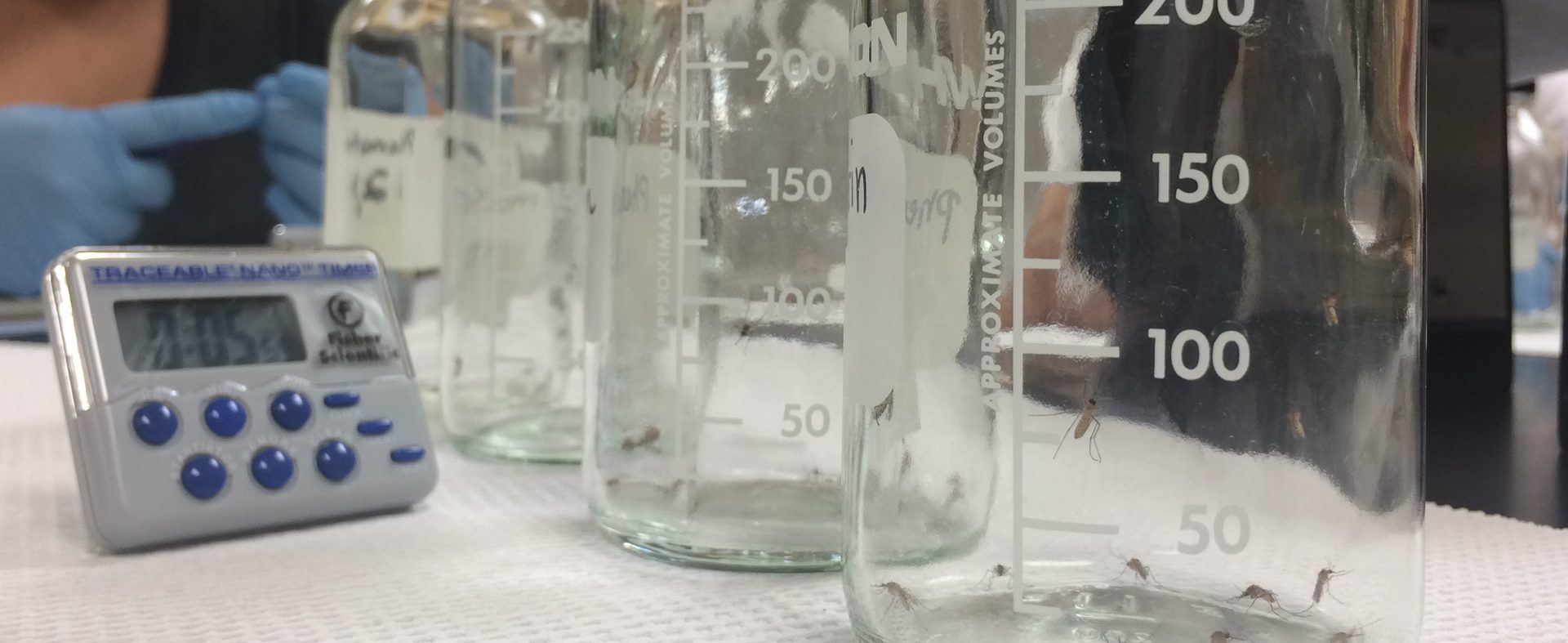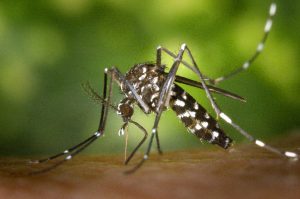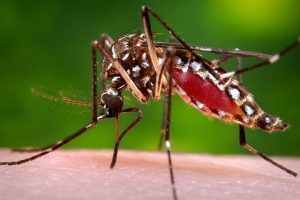Richards SL, Balanay JG, White AV, Hope J, Vandock K, Byrd BD and Reiskind MH (2018). Insecticide Susceptibility Screening Against Culex and Aedes (Diptera: Culicidae) Mosquitoes from the United States. Journal of Medical Entomology 55(2): 398-407.
Abstract
Mosquitoes exposed to sublethal doses of insecticides may be selected for resistance to insecticide active ingredients (AIs). Mosquitoes are exposed to AIs through agricultural, public/private mosquito control programs, homeowners, and other sources. Hence, mosquito control programs should routinely measure the resistance/susceptibility status of mosquito populations of public health concern. The objectives here were to determine resistance status for six AIs used in adult mosquito control in the United States to assess how resistance/susceptibility differs between AI, mosquito species (states where > 1 species collected), and between years (some populations sampled for 2 yr). Field-collected eggs from 21 mosquito populations of six different species or hybrid species (Aedes albopictus Skuse [Diptera: Culicidae], Aedes aegypti L. [Diptera: Culicidae], Culex nigripalpus Theobald, Culex pipiens L. [Diptera: Culicidae], Culex quinquefasciatus Say [Diptera: Culicidae], Cx. pipiens/quinquefasciatus) were obtained. Centers for Disease Control and Prevention bottle bioassays were used to assess the resistance/susceptibility status for six AIs (bifenthrin, deltamethrin, etofenprox, malathion, permethrin, and phenothrin). World Health Organization guidelines were used to classify mosquitoes as susceptible (98–100% mortality at diagnostic time [DT]), possibly resistant (80–97% mortality at DT), or resistant (<80% mortality at DT). Significant differences were observed in mosquito susceptibility/resistance between species and AIs. In states where both Aedes and Culex were collected, the odds of exhibiting resistance in Culex were 68–69 times higher than Aedes (Texas odds ratio: 69.30; 95% confidence interval: 5.86, 819.44; P = 0.001; North Carolina odds ratio: 67.99; 95% confidence interval: 15.21, 303.94; P < 0.0001). Some level of resistance was detected against all tested AIs in several mosquito populations and some varied between 2015 and 2016.
The full article can be accessed here.




